Providing your location allows us to show you nearby locations and doctors.
Tai Chi teacher regains strength after hemorrhagic stroke
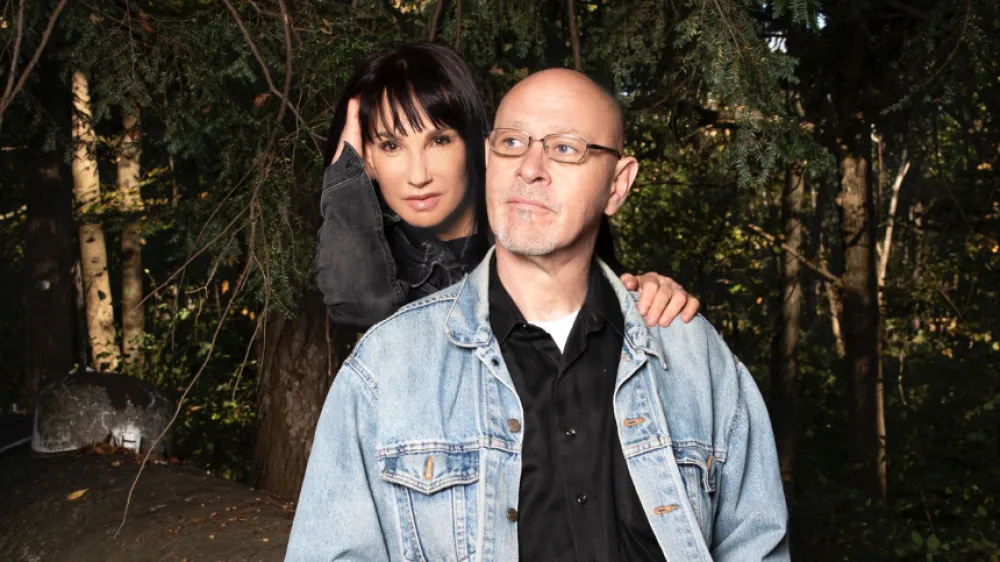
04/23/2025
Learn how stroke survivor Michael Craft taps into mindfulness and movement for healing.
On the morning of July 21, 2024, Michael woke up and told his wife, Gloria, he couldn’t feel the right side of his body. Gloria immediately called 911. Within four minutes, paramedics arrived and rushed Michael to Vassar Brothers Medical Center (VBMC), with Gloria following close behind.
Quick response saves Michael’s life on his way to Vassar Brothers Medical Center
By the time Gloria reached the hospital, the care team had already performed critical tests.
The diagnosis: a hemorrhagic stroke.
His stroke was caused by high blood pressure, a condition Michael never experienced. Doctors also discovered Michael was prediabetic, adding complexity to his treatment and recovery.
Related content: Stroke 101 and why it’s critical to call 911 for symptoms
Michael’s first steps to stroke recovery begin in the ICU
Michael spent the first phase of his stroke recovery in the intensive care unit (ICU) at VBMC. On August 11, he was transferred to Northern Dutchess Hospital to begin inpatient rehabilitation at the Paul Rosenthal Rehabilitation Center.
The entire right side of his body was flaccid — not paralyzed, but without strength or sensation.
Related content: Top 4 things you need to know about stroke
Overcoming weakness and loss of sensation after stroke
When Michael arrived at Northern Dutchess Hospital, he couldn’t move his right arm, hand, leg or foot. He couldn’t feel where they were in space. This is a condition known as proprioceptive loss.
Even when movement slowly began to return, he could only recognize his limbs by sight.
To lift his spirits, Michael’s hospital room was transformed into a space of healing, closely resembling a sanctuary.
Gloria filled it with aromatherapy, fresh flowers, heartfelt cards from loved ones and books. She even brought Dr. Seuss books for Michael to read, starting with Green Eggs and Ham, to help him regain his speech after experiencing aphasia.
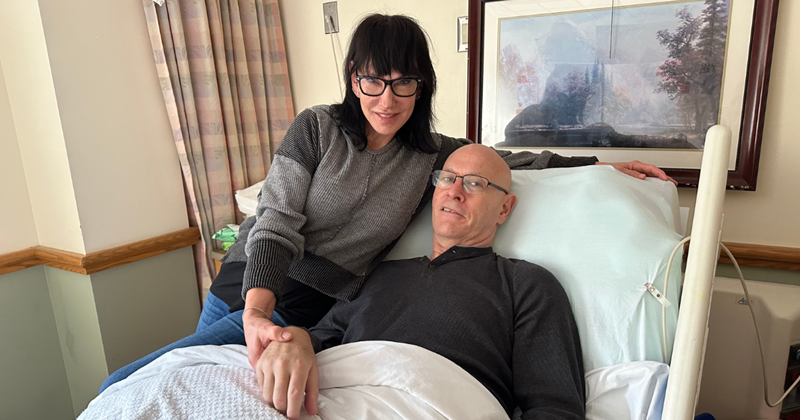
Mindfulness and resilience improve Michael’s mobility and strength post-stroke
Despite early challenges, Michael’s positive mindset stood out to his care team. “He was amazing right from the start,” physical therapist Carolyn Meyer said.
He tapped into his mindfulness background, understanding that it would be a long road and take a lot of hard work, but it would eventually pay off. And it did. He also trusted me to push him beyond what he felt he was capable of, even though I knew he could.”
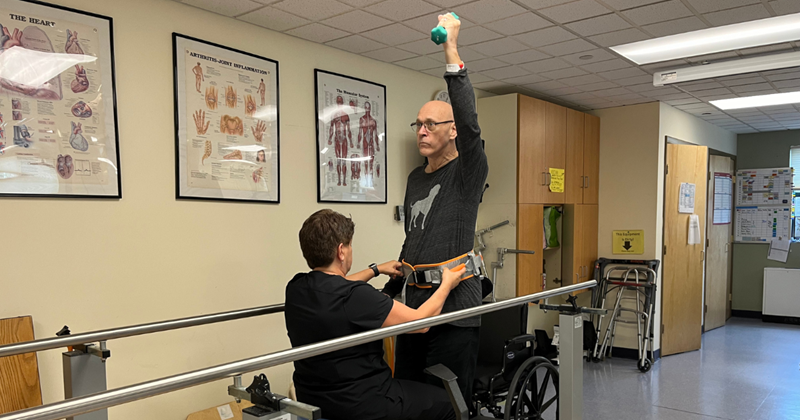
Going from an active, independent lifestyle to losing mobility was overwhelming.
Related content: Rehabilitation from a stroke, your questions answered
“It’s like being sucker-punched but not being able to get up afterward,” Carolyn added.
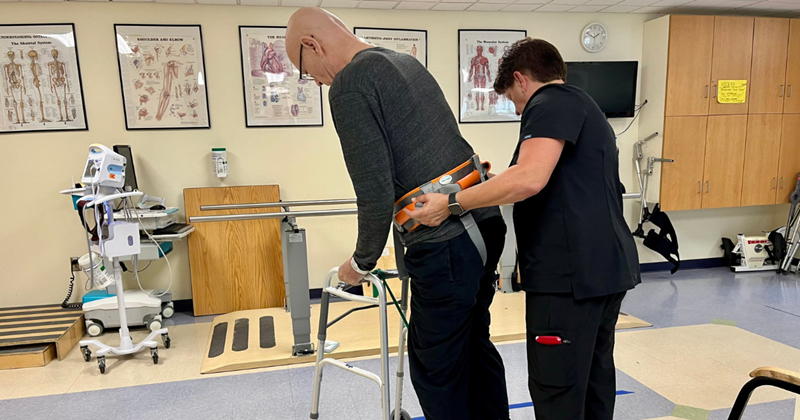
Carolyn recalled many pivotal moments early in Michael’s recovery, but one really stood out to her.
“I set him up in the mobility harness, and he was able to do a modified version of Tai Chi. Tai Chi was something he did passionately and religiously before his stroke and seeing him engage in it again was truly remarkable.”
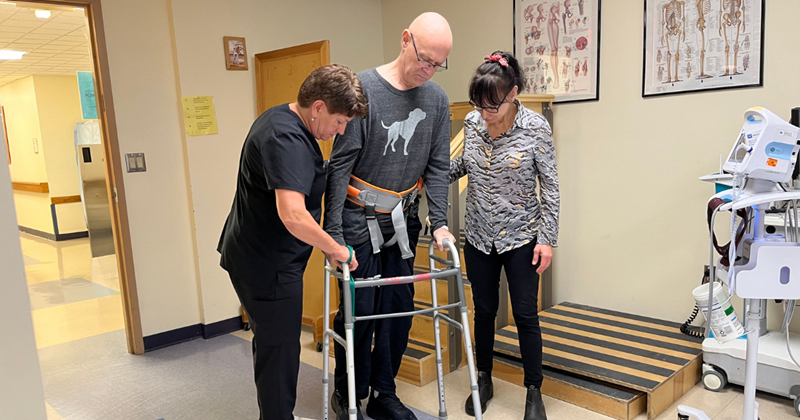
Michael taps into his holistic and spiritual roots to aid in his stroke recovery
Before his stroke, Michael was the business and program development strategist at Omega Institute in Rhinebeck, NY, for nearly four decades.
He created transformative programs and trainings focused on mindfulness, spirituality and holistic health. This included yoga, writing retreats, women’s leadership programs and Tai Chi and meditation classes.
Michael also orchestrated major spiritual and mindfulness conferences across the country, including at the Lincoln Center in New York City. Additionally, he authored the book Alien Impact.
Michael’s passion for holistic practices became a core part of his rehabilitation. As he transitioned to outpatient physical and occupational therapy, his determination only grew.
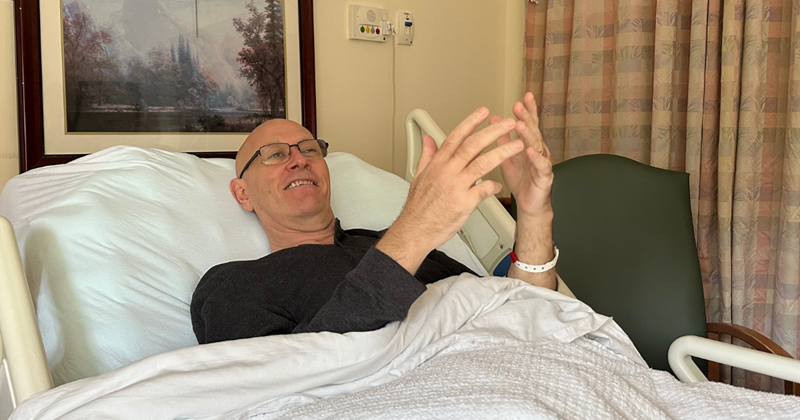
Determination helps Michael overcome pain during stroke rehabilitation
Michael had to push through a lot of pain to keep making progress,” occupational therapist Hannah Landon said. “His commitment to returning to the activities he valued before his stroke, like Tai Chi, made all the difference.”
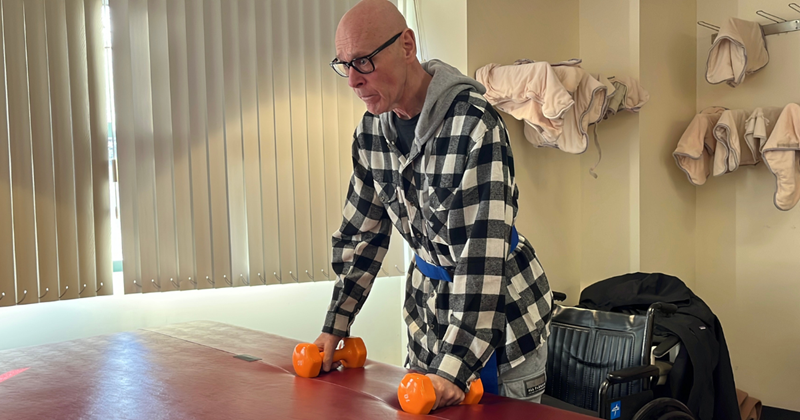
As part of his recovery, Michael has been doing rotator cuff exercises in occupational therapy.
“After a stroke, someone can experience shoulder subluxation, where the shoulder joint is not secure,” Hannah explained.
“We use isometric exercises to strengthen the rotator cuff and keep it in place. Michael’s shoulder was so tight and weak at first that we used stationary exercises to help him rebuild strength and stability.”
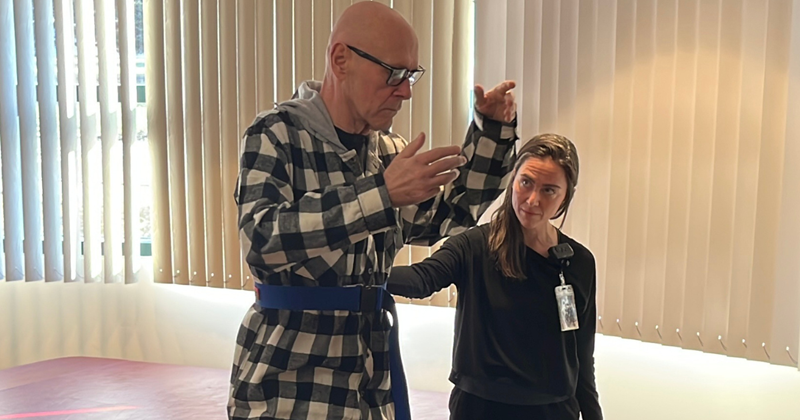
Michael’s experience with Tai Chi became a therapeutic asset.
Related content: Nuvance Health earns national recognition for excellence in stroke care
“There is so much research that shows the benefit of incorporating Tai Chi into stroke rehabilitation, and Michael already had a lot of motor memory around it. But it takes a lot of humility and vulnerability to let yourself be a beginner again. I was really impressed with his openness to practice. Immediately, we saw his right arm move in ways it hadn’t been able to in months and with less pain than he expected. It was a really beautiful and hopeful moment,” Hannah said.
Learn more about Stroke Rehabilitation at Nuvance Health
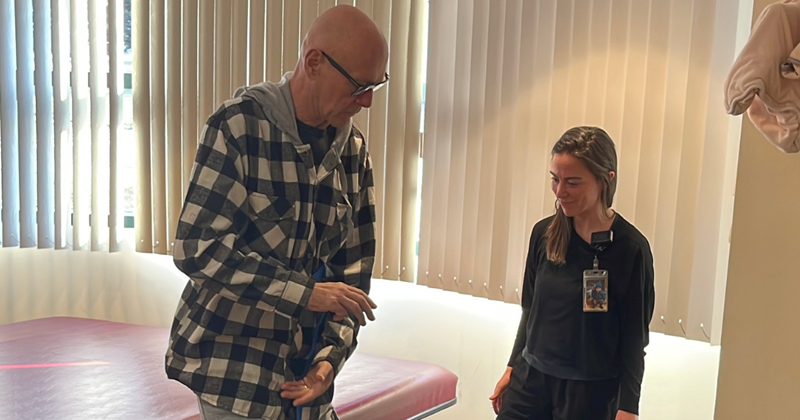
Day by day, Michael is regaining his independence after a stroke
Today, Michael is diligently continuing to work on regaining his independence. He reads a book every day, rides his exercise bike and nails all the questions on Jeopardy!
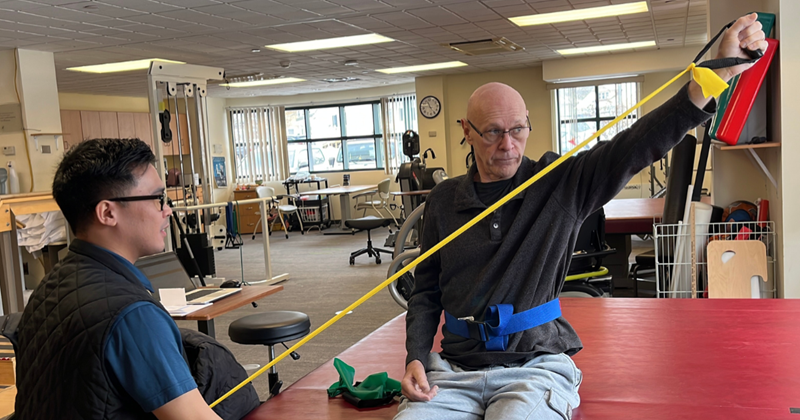
Michael’s goal is to be fully independent again.
“I want to walk up the stairs to my spiral staircase, get down on the floor and get back up without holding onto something,” he said.
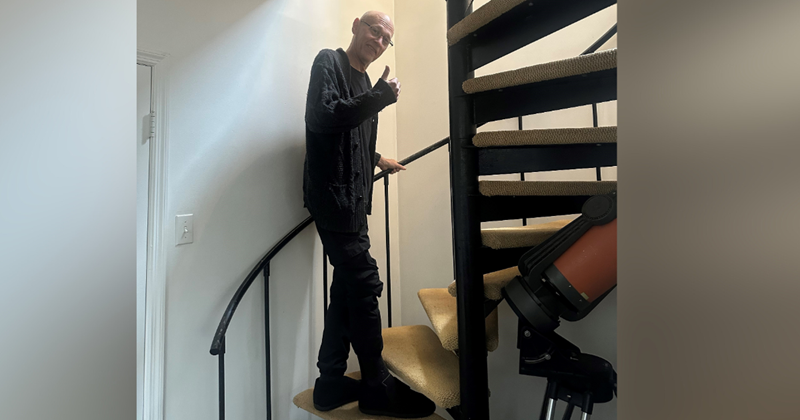
“I want to garden. I want to be self-sufficient. I want to be able to get in and out of bed unassisted. I just want to be independent again.”
Michael’s journey is a testament to the power of early intervention, holistic healing and the human spirit.
With the support of his wife, Gloria, his care team and his mindfulness, Michael continues to make meaningful strides in his recovery — one breath, one movement and one Tai Chi pose at a time.
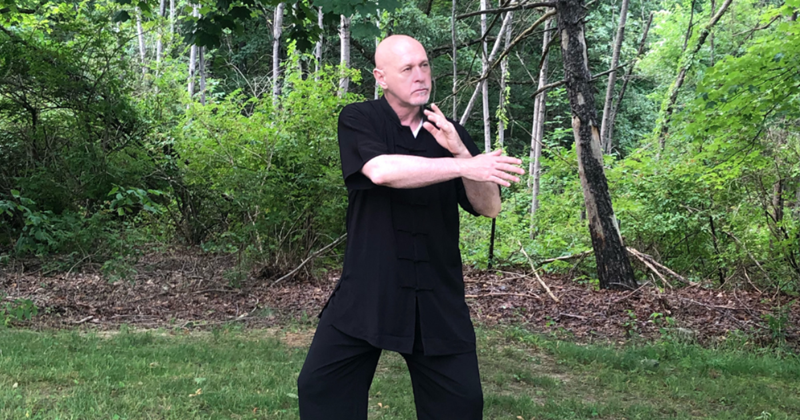
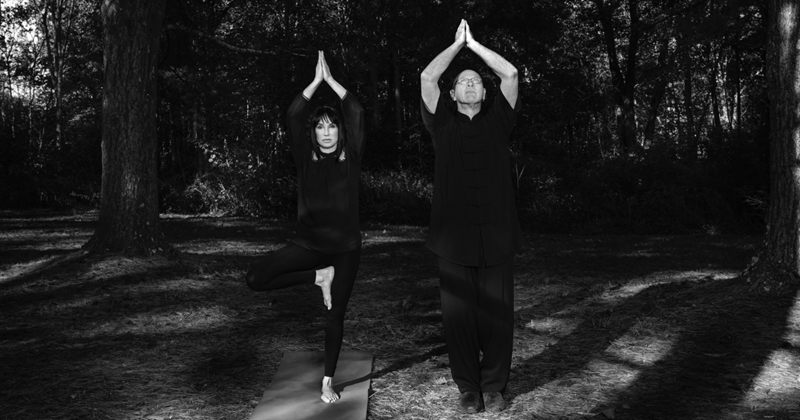
(two photos listed above and main hero image)
Disclaimer: Outcomes from a stroke vary from person to person. No individual results should be seen as typical.